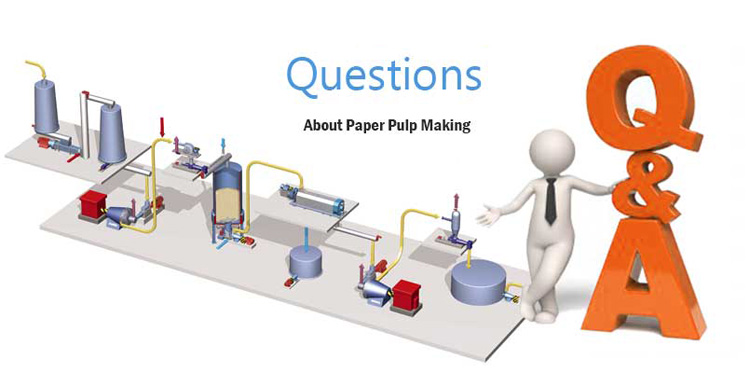What should know before starting paper pulp plant?
Ready to begin your paper pulp business? To know the answer to some ordinary questions is quite important, You can figure out what a real paper pulping process is and make your wood pulp production smoothly.
1.What is paper pulping making?
Pulp is a fibrous material obtained by using different methods of processing from plant fibers. It can be divided into mechanical pulp, chemical pulp and chemical mechanical pulp according to the processing method; it can also be divided into wood pulp, straw pulp, hemp pulp, mash pulp, sugar cane pulp, bamboo pulp, rag pulp, etc. according to the fiber raw materials used. According to different purity, it can be divided into refined pulp, bleached pulp, unbleached pulp, high yield pulp, semi-chemical pulp and so on.
Conventional pulping refers to the process of disintegrating vegetable fiber raw materials into natural or bleached pulp by chemical methods, mechanical methods or a combination of the two. The commonly used process is to pulverize, digest, wash, screen, bleach, purify, and dry plant fiber raw materials.
Modernly developed a biological pulping method, which first uses special strains (white rot fungi, brown rot fungi, soft rot fungi) to specifically decompose the lignin structure, and then mechanically or chemically dissociates the remaining cellulose. Then bleaching is carried out. In this process, the organism has decomposed and opened most of the lignin. The chemical method is only used as an auxiliary function. The chemical products used are less than the traditional methods, so it can be used to reduce emissions or not discharge waste liquid. It is an environmentally friendly pulping, clean pulping methods.
2.What are the benefits of diluting white liquor with black liquor?
Black liquor: Waste liquid produced during pulp cooking and papermaking. Black liquor contains inorganic substances, lignin, hemicellulose, organic acids, etc., black or brown
White liquor: White liquor is a general term for cooking liquor in the paper pulping industry. It usually consists of sodium hydroxide and sodium sulfide.
The cooking liquor is in great demand on the actual pulp production line. From the point of view of energy saving, it is feasible to add a certain amount of black liquor to it. The specific benefits are as follows:
Reduce white liquor concentration and reduce cellulose degradation.
To achieve the purpose of dilution without increasing the evaporation of waste liquid.
Reuse of residual alkali and waste liquid heat of waste liquid.
Hemicellulose in black liquor has a lubricating effect.

3.Why does alkaline cooking require the remaining alkali?
When the residual black liquor is insufficient, the organic acid produced by the decomposition of carbohydrates at the end of the cooking process lowers the pH. If the pH is less than that of the solute adsorbed on the fiber, the lignin in the pulp increases with time, which adversely affects the next step. Especially when the pH is equal to 6, the sedimentation of lignin will reach a peak. This is why we should control the alkaline capacity.
4.What is the difference between KP pulp and SP pulp?
- KP pulp has higher strength than SP pulp.
- KP pulp has a lower whiteness than SP pulp.
- KP pulp has good applicability and is suitable for various papermaking industries. SP pulp has long and soft fiber, but its applicability is poor.
- KP pulp is dark in color and high in whiteness, requiring multiple bleaching; SP pulp basically does not require bleaching treatment.
- Compared to KP pulp, SP pulp is easier to wash and paper.
5.How do you determine the degree of vulcanization? Does bigger mean better?
According to the transition relationship between alkali content and sulfidation degree, when the alkaline content is reached, the content of sulfide directly affects the amount of sodium sulfide. Since sulfide is a direct application to delignification, vulcanization has an effect on cooking speed, pulp yield and pulp quality.
Increase the degree of sulphurization within a certain range, which can shorten the cooking time, reduce the lignin content, and ensure the pulp yield. However, too high a vulcanization value will have a negative impact on subsequent work.
Produce odor and environmental pollution.
Increase the corrosion of the pulper.
When the degree of sulfonation exceeds a certain value, the NaOH content cannot meet the requirements of delignification.
Sulphide is limited by alkali recovery.
In short, the degree of vulcanization is not as large as possible.

